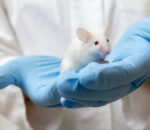Porphyria triggers may derail energy output in brain: Mouse study
It remains unknown if these effects on mitochondria hold true in humans

Certain triggers of acute intermittent porphyria (AIP) may also affect the function of the brain’s mitochondria — the bean-shaped structures that produce energy inside cells — according to a mouse study conducted by researchers in Argentina.
While it is unknown whether this holds true in humans, understanding “the mechanisms acting on the onset of AIP is vital in translational medicine,” the scientists wrote.
Translational medicine is where laboratory findings are used to develop new ways to diagnose and treat diseases.
The study, “Xenobiotics Triggering Acute Intermittent Porphyria and Their Effect on Mouse Brain Respiratory Complexes,” was published in the Journal of Xenobiotics by a team of scientists from the School of Medicine at the University of Buenos Aires. The animal study protocol used was approved by the school’s Institutional Committee for the Care and Use of Laboratory Animals.
Trying to better understand ‘broad action’ of anesthetics
AIP is caused by mutations that reduce the activity of an enzyme known as HMBS or PBGD. This enzyme is responsible for the third step in the process of making heme, a component of iron-containing proteins, such as hemoglobin, which binds oxygen in red blood cells.
Mutations limit the amount of heme that can be made. As a result, 5-aminolevulinic acid (ALA) and porphobilinogen (PBG), the molecules formed in the first two steps of the process, build up to toxic levels in cells, causing a range of symptoms.
Certain chemicals, such as barbiturates used to induce sleep or anesthesia, are porphyrinogenic, that is, they can precipitate acute attacks of porphyria. It is not known whether such chemicals may also affect the way mitochondria work.
“A better understanding of the broad action of anesthetics and other porphyrinogenic drugs altering several metabolic pathways besides the heme pathway would be crucial in translational medicine to allow us to extrapolate the results from animals to humans,” the researchers wrote.
Testing known triggers of porphyria in the lab
To find out more, the team treated healthy mice with various chemicals and checked how they affected complexes I through IV — the first four of five mitochondrial complexes that carry out oxidative phosphorylation, which outputs much of the energy used by cells.
A single dose of isoflurane, an anesthetic, increased the activity of complexes I-III in the brain by 69%. However, when the researchers calculated the ratio of complexes I-III divided by II-III, it was lower in treated versus untreated mice (2.14 vs. 4.03). A lower ratio may indicate a disruption of oxidative phosphorylation.
Another anesthetic, sevoflurane, increased the activity of complexes II-III by 61.5%, but decreased that of complex IV by 77%. As with isoflurane, the ratio of complexes I-III divided by II-III was lower in mice treated with a single dose of sevoflurane (5.23 vs. 9.06).
Allylisopropylacetamide (AIA), a known trigger of porphyria, decreased the activity of complexes I-III, II, and II-III by as much as 51%. Moreover, the ratio of complexes I-III divided by II-III was lower in mice treated with a single dose of AIA versus untreated mice (3.9 vs. 5.38).
While barbital, a barbiturate, increased the activity of both complexes II and IV by as much as 200% when administered as three daily subcutaneous or under-the-skin injections, the ratio of complexes I-III divided by II-III was lower in treated versus untreated mice (1.82 vs. 2.41).
Ethanol, added at 30% to drinking water for one week, was the only chemical that increased the ratio of complexes I-III divided by II-III (13.4 vs. 10.05), indicating a possible increase in the production of energy through oxidative phosphorylation.
A single dose of ALA was enough to decrease the activity of complexes I-III by 37% and that of complex II by 55%, and to increase the activity of complex IV by just greater than 160%. This suggests that changes to the brain’s mitochondria may be linked to symptoms of AIP.
All chemicals tested are broken down in the body by cytochrome P-450, a protein that requires heme as a component. Low levels of heme may cause ALA to build up, “leading to the induction of oxidative stress, which can in turn affect respiratory complexes.”
Oxidative stress is a form of damage that results from an imbalance between the production of harmful oxygen-containing molecules and the cells’ ability to clear them with antioxidants.
In the brain, oxidative stress leads to changes in heme oxygenase, an enzyme that breaks down heme. This is “a key enzyme of heme metabolism, which can be considered as one of the factors triggering the porphyria,” the researchers wrote.








